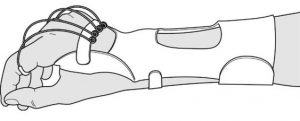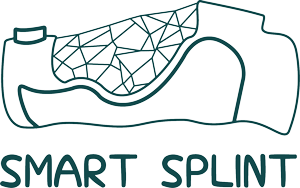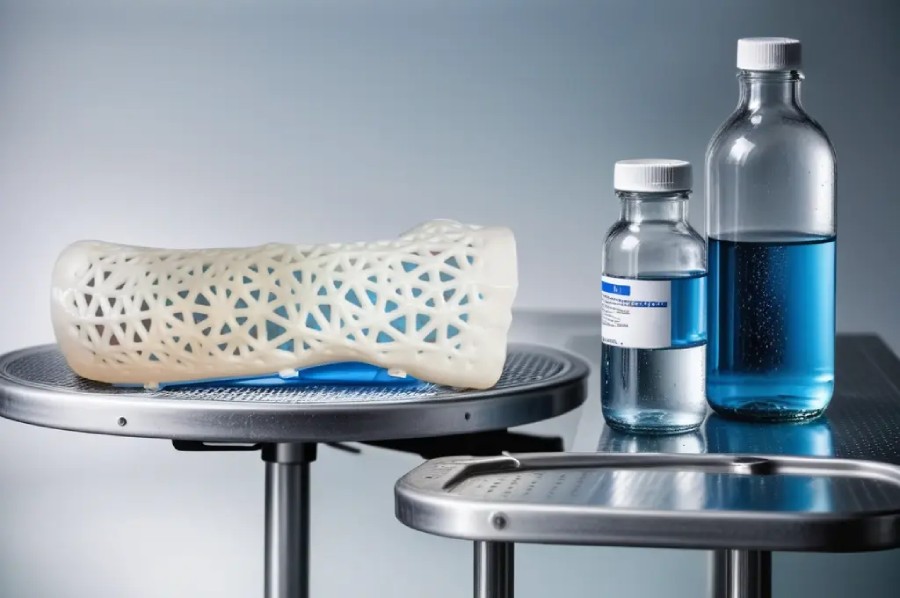
Purpose of splinting
It is important to know that a serious injury can happen when you least expect it, whether you are engaged in a game, running, or even just walking up and down the stairs.
When a bone is broken or an injury occurs, a splint is often used to help protect and support the affected area. A splint keeps the injured part of your body still to help with pain and promote healing. Some splints are flexible and some are rigid. The type of splint you need will depend on the type of injury you have and the part of your body that is injured.
The primary purpose of splinting is to stabilize an injured area to reduce movement. Which indirectly helps to reduce pain, decrease swelling, and help prevent any further damage to the surrounding muscle tissue. Splints treat minor sprains, muscle tears, dislocations, or lacerations. When the bone is broken and requires complete and extended immobilization to heal, a cast may be a more effective option compared to a splint.

What’s the difference between a splint and a cast?
While there are several differences between a splint and a cast, the main difference is a cast involves the application of plaster or fiberglass surrounding the entire injured area. They support the injury more by ultimately preventing movement, allowing for improved healing due to lower mobility. Splints are easily removable requiring high patient compliance to reduce the mobility of the injured body part.
Advantages of casting
As casts provide better stabilization due to the circumferential application, they are better at healing broken bones and, therefore, the primary tool for treating fractures. Doctors and nurses now have the option of plaster or fiberglass casts, both with advantages and disadvantages.
Disadvantages of casting
While casts provide fantastic support and completely immobilize the injury, you can’t just sit and forget. It’s essential to regularly check the area under the plaster or fiberglass as complications, including pressure sores, compartment syndrome, skin infections, and dermatitis, can occur.
Advantages of splinting
It is fast and easier to apply to an injured area, making it the preferred first-line treatment to immobilize an injured body part. By using splints, it is possible to lower the chances of experiencing pressure sores or compartment syndrome.
Disadvantages of splinting
The main disadvantage of splinting, particularly for the management of hairline fractures, sprains, tendon injuries, and other soft-tissue injuries, is it requires high patient compliance. It’s the patient’s responsibility to remember to wear the splint, which can affect the healing process if they’re particularly forgetful or non-compliant.
Different types of splints
There is a splint for most body parts. Finger, arm, leg, or even toe splints use different shapes, materials, and thicknesses to suit a particular area and treat a specific injury. For example, the splint used to treat a bone fracture will be entirely different from a torn ligament or muscle. Let’s look at the different types of splints in more detail and when to use them.
Static
Like a static splint, the serial static aims to increase the tissue length to increase the passive range of movement. This splint type will stabilize the injured limb or appendage in its end-range position, with the medical professional regularly removing the splint to check and adjust the range of movement.
Dynamic
A dynamic splint will still support an injured area; however, the primary purpose is to assist with controlled movement. It’s a functional type of splint that allows health professionals, whether it be a doctor or physio, to adjust the tension and increase the range of movement slowly.
Serial static
Like a static splint, the serial static aims to increase the tissue length to increase the passive range of movement. This splint type will stabilize the injured limb or appendage in its end range position, with the medical professional regularly removing the splint to check and adjust the range of movement.
Resting
Resting splints are used to immobilize a joint or limb after an injury or surgery. They are designed to allow the injured area to rest and heal by preventing movement. Resting splints are typically made of rigid materials such as plastic or metal and are secured in place with straps. They are commonly used for injuries to the wrist, hand, and fingers.
Night splints
Night splints are designed to be worn while sleeping and are used to treat conditions such as plantar fasciitis and achilles tendonitis. They are typically made of a soft material and are designed to hold the foot in a flexed position.
What are splints used for?
Splints are used to treat different types of injuries. Sometimes a splint is used before a cast, and sometimes a splint is used alone. Injuries that are treated with splints include:
- Broken bones
- Sprains
- Carpal tunnel syndrome
- Dislocated bones
- Strains
- Tendon ruptures
How to take care of a splint?
If you have a removable splint, follow your doctor’s instructions about when you can remove it. Your doctor will also tell you if you can walk or put weight on your splint. Other general care tips include:
- Place your arm or leg on a pillow above the level of your heart as often as you can over the next 3 days to help reduce swelling.
- Ice the limb for 10 to 20 minutes every 1 to 2 hours for the next 3 days or until the swelling goes down.
- Don’t get your splint wet.
- Wiggle your fingers or toes if they aren’t injured to help move the blood in your injured limb.
- Don’t stick anything under your splint to scratch.
- If you’re itching and can’t remove your splint, try blowing cool air under your splint from a blow dryer or fan.
- Don’t use oils or lotions near your splint.
- If your splint is irritating your skin, pad the edges with moleskin or tape.
- If you can’t take off your splint, cover it with plastic sheeting while you take a shower.
- If you can remove your splint to take a shower, dry your skin well before you put it back on.
Important things to know about splints
- They help to reduce pain and swelling: By immobilizing the injured area, splints can help to reduce pain and swelling. This can be particularly important in the early stages of an injury when the area is most tender and inflamed.
- They help to reduce pain and swelling: By immobilizing the injured area, splints can help to reduce pain and swelling. This can be particularly important in the early stages of an injury when the area is most tender and inflamed.
- They can prevent further injury: Splints help to prevent further injury by immobilizing the affected area and preventing movement. This can be important in cases where movement could cause further damage or delay healing.
- They can promote healing: By immobilizing the affected area, splints can help to promote healing by allowing the injured tissues to rest and recover. This can be particularly important for injuries that require a period of immobilization to heal properly.
- They may be temporary or long-term: Splints may be used for a short period, such as a few days or weeks, or for a longer period, such as several months or even longer. The duration of splint use will depend on the nature and severity of the injury or condition.
- They may be customized: In some cases, splints may be custom-made to fit the individual needs of the patient. This may be necessary in cases where a standard off-the-shelf splint does not provide adequate support or immobilization.
- They may be combined with other treatments: Splints may be used in combination with other treatments, such as physical therapy, medication, or surgery. This can help to optimize the healing process and restore full function to the affected area.
Some tips for caring for a splint
- Keep the splint dry: Moisture can weaken the materials of the splint and cause skin irritation or infection. Avoid getting the splint wet, and use a plastic bag or waterproof cover to protect it when showering or bathing.
- Avoid putting weight on the splint: Putting weight on the splint can cause it to crack or bend, reducing its effectiveness. Use crutches or other assistive devices as directed by your doctor to avoid putting weight on the affected limb.
- Keep the skin clean: Dirt and sweat can accumulate under the splint, leading to skin irritation or infection. Use a damp cloth to gently clean the skin around the splint and avoid using powders or lotions that could get trapped under the splint.
- Check for signs of irritation or infection: If you notice any redness, swelling, or discharge around the area of the splint, contact your doctor immediately. These could be signs of skin irritation or infection that require prompt treatment.
- Avoid adjusting the splint: Only your doctor should adjust or remove the splint. Attempting to adjust the splint can cause further injury or damage.
- Follow your doctor’s instructions: Your doctor will provide specific instructions on how to care for your splint and when to return for follow-up appointments. It is important to follow these instructions carefully to ensure the best possible outcome.
Conclusion
Splints are an important tool in the treatment of many different types of injuries and conditions. The type of splint used will depend on the nature and severity of the injury, as well as the individual needs of the patient. Whether you are dealing with a minor injury or a more serious condition, splints can help to reduce pain, promote healing, and restore mobility.


